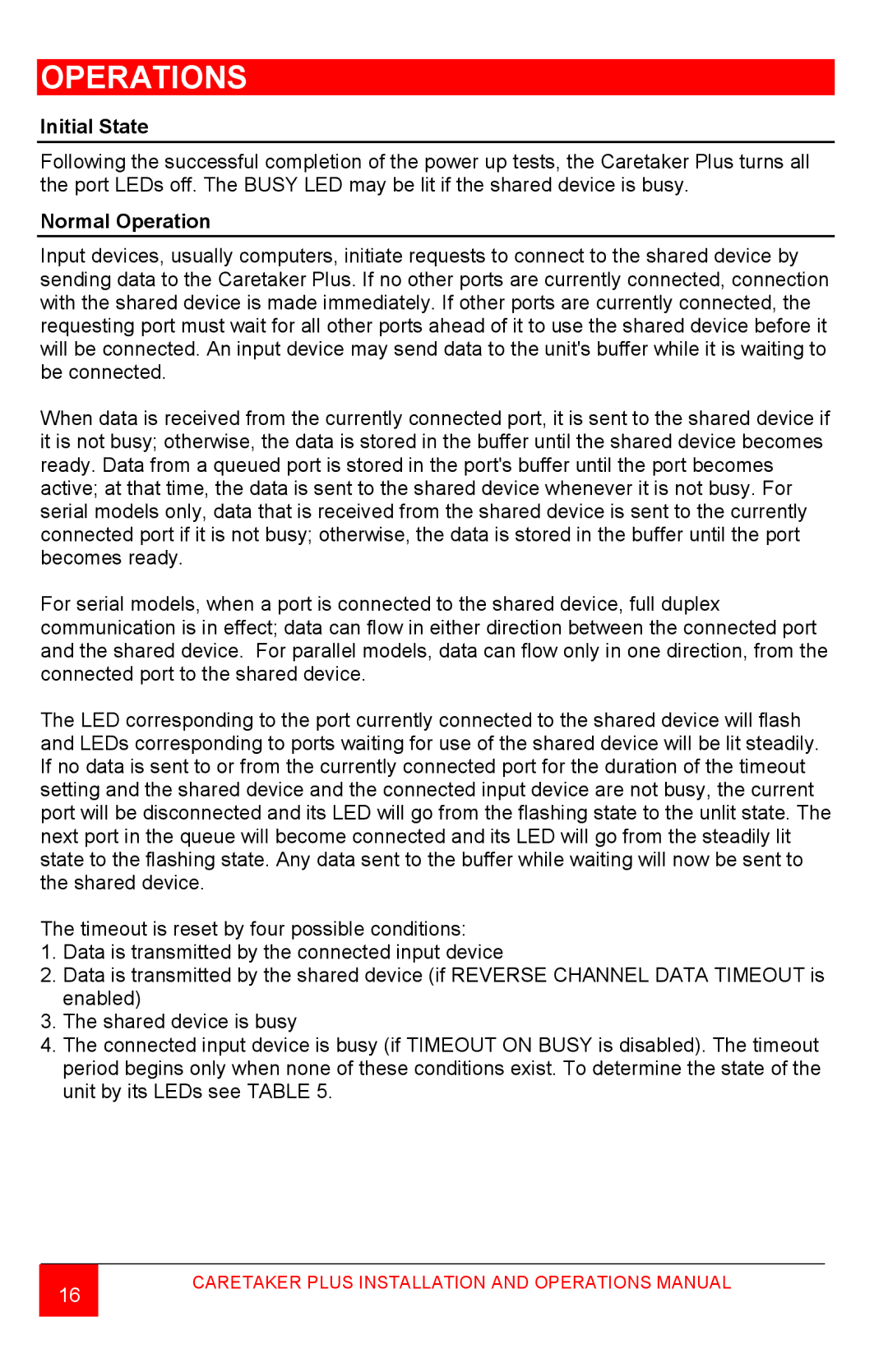
OPERATIONS
Initial State
Following the successful completion of the power up tests, the Caretaker Plus turns all the port LEDs off. The BUSY LED may be lit if the shared device is busy.
Normal Operation
Input devices, usually computers, initiate requests to connect to the shared device by sending data to the Caretaker Plus. If no other ports are currently connected, connection with the shared device is made immediately. If other ports are currently connected, the requesting port must wait for all other ports ahead of it to use the shared device before it will be connected. An input device may send data to the unit's buffer while it is waiting to be connected.
When data is received from the currently connected port, it is sent to the shared device if it is not busy; otherwise, the data is stored in the buffer until the shared device becomes ready. Data from a queued port is stored in the port's buffer until the port becomes active; at that time, the data is sent to the shared device whenever it is not busy. For serial models only, data that is received from the shared device is sent to the currently connected port if it is not busy; otherwise, the data is stored in the buffer until the port becomes ready.
For serial models, when a port is connected to the shared device, full duplex communication is in effect; data can flow in either direction between the connected port and the shared device. For parallel models, data can flow only in one direction, from the connected port to the shared device.
The LED corresponding to the port currently connected to the shared device will flash and LEDs corresponding to ports waiting for use of the shared device will be lit steadily. If no data is sent to or from the currently connected port for the duration of the timeout setting and the shared device and the connected input device are not busy, the current port will be disconnected and its LED will go from the flashing state to the unlit state. The next port in the queue will become connected and its LED will go from the steadily lit state to the flashing state. Any data sent to the buffer while waiting will now be sent to the shared device.
The timeout is reset by four possible conditions:
1.Data is transmitted by the connected input device
2.Data is transmitted by the shared device (if REVERSE CHANNEL DATA TIMEOUT is enabled)
3.The shared device is busy
4.The connected input device is busy (if TIMEOUT ON BUSY is disabled). The timeout period begins only when none of these conditions exist. To determine the state of the unit by its LEDs see TABLE 5.
16
